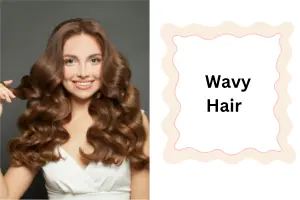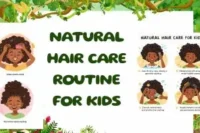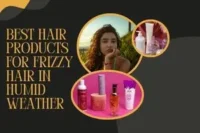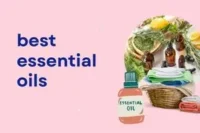The Curly Hair Chronicles – Celebrate Your Spirals
Published: 15 Oct 2024
Curly hair is more than just a hair type; it’s an expression of individuality and heritage. In a world where straight strands often dominate, The Curly Hair Chronicles celebrates the natural beauty of spirals. Each curl has its own story of culture, identity, and the artistry of nature. Whether you’re just beginning your curly journey or you’ve been rocking curls for years, this guide will help you embrace, care for, and love your hair. From understanding curly types to learning styling techniques and cultural roots, this article is crafted for readers aged 15-45. It’s time to give your curls the love they deserve!
Understanding Curly Hair Types and Texture
Curly hair is unique, and it requires special care to keep it healthy, vibrant, and full of life. Let’s break it down into three main types, each with its own characteristics.
Type 2 – Wavy Hair
- Loose, natural waves or S-shaped curls
- Easier to manage than tighter curls, but still needs moisture to maintain bounce
- Prone to frizz if not treated with the right products
Type 3 – Curly Hair
- Well-defined, springy curls that range from loose loops to tight corkscrews
- More volume, but also more prone to frizz and dryness
- Requires moisturizing products to keep curls defined and healthy
Type 4 – Coily Hair
- Tight coils or zig-zag patterns that have more shrinkage, making hair appear shorter
- Dense and textured, with a need for intense moisture
- Prone to breakage without gentle handling and the right products
The Science Behind Curly Hair
Curly hair is shaped by genetics, biology, and environmental factors. Understanding the science behind your curls can help you manage them better.

The Asymmetrical Follicles
Curly hair grows from asymmetrical hair follicles, which cause the hair to spiral. This spiral shape gives curls their volume but reduces shine, as the oils from the scalp have a harder time traveling down the hair shaft.
The Role of Keratin
Keratin, the primary protein in hair, is unevenly distributed in curly hair. This causes the bends and twists that form the curl pattern. The more uneven the keratin, the curlier the hair will be—making protein for hair repair essential to strengthen and support your natural texture.
The Impact of Genetics
Your genetics largely determine your curly hair. The shape of your hair follicles, which is passed down from your parents, plays a significant role in whether your hair is straight, wavy, or curly.
Common Challenges of Curly Hair
Curly hair is undeniably beautiful, but it can also present its own set of challenges. Understanding these challenges will help you better care for your curls.
Frizz
Frizz occurs when the hair cuticle is raised, allowing moisture to swell the hair shaft. This is particularly common in humid climates, which makes curly hair care essential for maintaining smooth, frizz-free curls.
Tangles and Knots
Curly hair tends to get tangled easily, especially with tighter curls. Regular detangling and using the right eco-friendly hair products will help prevent breakage and make styling easier, while being gentle on both your strands and the planet.
Length Perception
Curly hair appears much shorter than it is due to shrinkage. This can be frustrating, especially for those growing out their curls. However, with the right care and styling, you can embrace your curls’ natural length and beauty.
The Importance of Moisture for Curly Hair
Moisture is the key to healthy, vibrant curls. Curly hair is more prone to dryness due to its spiral structure, which makes it difficult for natural oils to travel down the hair shaft.

Hydrating Products
Conditioners and deep conditioners are essential for rehydrating curly hair. Look for products that are formulated to penetrate the hair shaft and lock in moisture, keeping your curls nourished and soft.
Leave-In Conditioners and Serums
Leave-in conditioners and serums help protect your curls from environmental factors like humidity and pollution. They also prevent frizz and keep your curls defined. Natural oils like argan oil or jojoba oil are excellent for maintaining moisture.
Styling Tips for Curly Hair
Proper styling is essential to keep your curls looking their best. Here are some tips to help you master the art of curly hair styling.
The Plopping Technique
Plopping involves wrapping your curls in a T-shirt or microfiber towel to enhance curl definition while controlling frizz. This technique helps your curls dry in their natural shape, minimizing damage.
Using a Diffuser
When blow-drying your curls, use a diffuser attachment. It evenly distributes the heat, allowing curls to dry without frizz. Set the blow dryer on a low heat setting to prevent damage.
The Pineapple Method
For those with long curls, the pineapple method is an excellent way to preserve curl shape overnight. Gather your curls loosely at the top of your head to prevent flattening while you sleep, and consider using Pineapple Method for Sleeping Curls products to enhance hold and reduce frizz by morning.
Products That Benefit Curly Hair
The right products can make a huge difference in the health and appearance of your curls. Here are some must-haves for curly hair care.
Sulfate-Free Shampoos
Sulfates can strip curly hair of its natural oils, leading to dryness and frizz. Look for sulfate-free shampoos to keep your curls hydrated and healthy.
Curl Creams and Gels
Curl creams and gels are designed to define curls while maintaining their natural bounce. Look for products that include moisturizing ingredients like aloe vera or shea butter.
Deep Conditioning Masks
Deep conditioning treatments are crucial for maintaining moisture and elasticity in curly hair. Regularly using these masks will help prevent breakage and keep your curls soft and manageable.
The Cultural Significance of Curly Hair
Curly hair holds a deep cultural significance around the world. It has been celebrated in various rituals, festivals, and as a symbol of heritage.
The Rise of the Natural Hair Movement
The natural hair movement has empowered individuals to embrace their curls and reject society’s unrealistic beauty standards. It encourages self-love and acceptance, promoting inclusivity and diversity.
Curly Hair in Cultural Rituals
In many cultures, curly hair is an important symbol of identity and family heritage. Hairstyles and adornments have specific meanings and play a role in cultural expression.
Famous Curly Hair Icons
Celebrities like Beyoncé, Tracee Ellis Ross, and Shakira have become icons for curly-haired individuals. They’ve helped normalize curly hair in mainstream media, proving that curls can be just as glamorous as straight hair.
Curly Hair as Self-Expression
Curly hair is more than just a hairstyle; it’s a form of self-expression. It allows individuals to show their personality and creativity through their hair.
The Malleability of Curls
One of the best things about curly hair is its versatility. Whether you prefer loose waves or tight coils, curly hair offers endless styling possibilities to suit your mood and personality.
Protective Styles
Styles like braids, twists, and updos are great for protecting curls while allowing you to express yourself. These styles help maintain the health of your hair while showcasing your unique look.
Caring for Curly Hair at Home
Taking care of curly hair at home requires dedication and the right techniques. Regular trims, moisture, and scalp care are key to maintaining healthy curls.
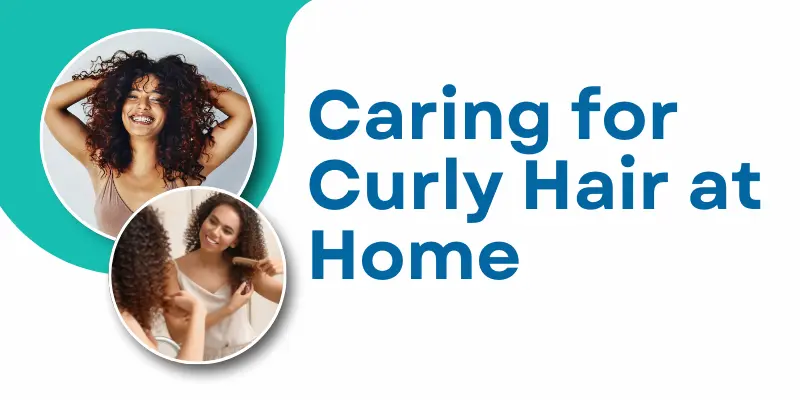
Regular Scalp Massages
Scalp massages promote blood circulation, which helps with hair growth and overall health. You can also apply oil treatments during these massages to nourish your scalp and hair.
Using the Right Water Temperature
When washing your hair, always use lukewarm water. Hot water can strip your curls of moisture and cause damage. Gently squeeze out excess water using a microfiber towel to prevent frizz.
The Future of Curly Hair Care
The curly hair care industry is rapidly evolving, with new products and innovations tailored to every curl type and texture. As awareness grows, the future of curly hair care looks brighter than ever.
Conclusion
Curly hair is a beautiful and unique feature that deserves recognition and appreciation. By understanding your curls, using the right products, and adopting proper styling techniques, you can embrace your natural hair with confidence. The curly hair community is diverse and rich, and there’s no better time to celebrate it.
Faqs
Curly hair is any hair pattern that bends, loops, or spirals instead of lying flat. It is classified into different curl types ranging from Type 2 (wavy) to Type 4 (coily). Within these groups, subcategories like 3A, 3B, 3C, and 4A–4C describe how tight or loose the curls are. This classification helps people choose the right care and styling methods for their curl type.
Type 3 curls are springy, defined, and prone to frizz if not cared for properly. They need moisture-rich shampoos, conditioners, and leave-ins to stay healthy. Oils or curl creams help maintain definition and prevent dryness. Regular trims every 8–10 weeks are also essential to remove split ends and keep curls bouncy.
Yes, curly hair is often considered very attractive because of its natural texture and volume. Its uniqueness adds character and personality to a person’s overall style. Curls can look elegant, playful, or bold depending on how they are styled. Most importantly, when someone embraces and loves their curls, it radiates confidence and beauty.
Curly hair tends to be drier than straight hair because natural oils struggle to travel down the strands. To keep it healthy, it needs hydration, deep conditioning, and minimal heat styling. Sulfate-free shampoos and moisturizing leave-ins work best. Trimming every 8–12 weeks also prevents breakage and helps curls stay strong.
No, curly hair is not tied to any single ethnicity—it’s found across the world. People from African, European, Asian, Middle Eastern, and Latin backgrounds can all have curls. The patterns may vary in tightness and thickness, but curls are universal. This diversity makes curly hair an amazing expression of global beauty.
Yes, curly hair can include the 4C pattern, which is the tightest curl type with a zig-zag shape. It is very delicate, prone to dryness, and needs extra moisture and gentle handling. Products like shea butter, oils, and heavy creams help maintain softness and prevent breakage. 4C hair is incredibly versatile and can be styled in endless ways.
2C hair is a mix of both—falling between waves and curls. It usually forms loose “S-shaped” patterns that have more definition than regular waves but less tightness than true curls. This hair type often struggles with frizz and needs lightweight curl products. With the right care, 2C hair can look naturally textured and voluminous.
No, curly hair is not rare—actually, over 65% of people globally have naturally curly or wavy hair. However, it often goes unnoticed because many people straighten or alter their natural texture. In fact, curls are incredibly common but vary widely in tightness, density, and thickness. Embracing natural curls shows how widespread and beautiful they truly are.
Brushing curly hair, especially when it’s dry, usually causes frizz and breakage. Instead, detangle gently when hair is wet and coated with conditioner. A wide-tooth comb or fingers are the best tools for this process. This keeps curls defined, reduces breakage, and helps maintain a healthy curl pattern.
Men and boys with curly hair can use curl creams, gels, or leave-ins to define and shape their curls. Finger-coiling, scrunching, or twisting damp hair are great techniques to bring out curl patterns. A diffuser on low heat can also help dry curls without frizz. Keeping the hair moisturized ensures it looks fresh and stylish every day.

- Be Respectful
- Stay Relevant
- Stay Positive
- True Feedback
- Encourage Discussion
- Avoid Spamming
- No Fake News
- Don't Copy-Paste
- No Personal Attacks

- Be Respectful
- Stay Relevant
- Stay Positive
- True Feedback
- Encourage Discussion
- Avoid Spamming
- No Fake News
- Don't Copy-Paste
- No Personal Attacks

